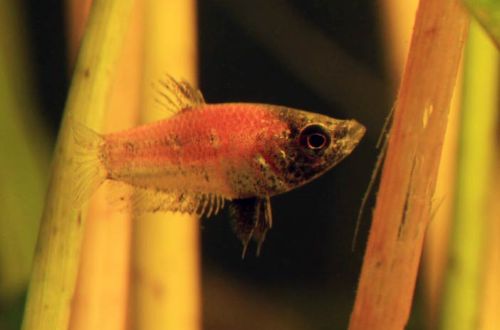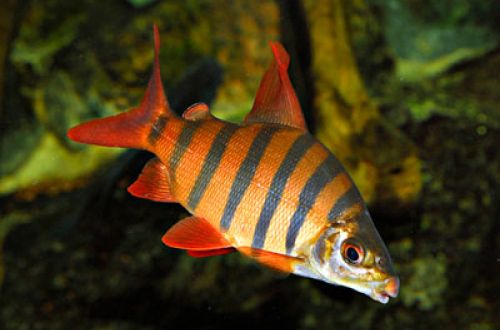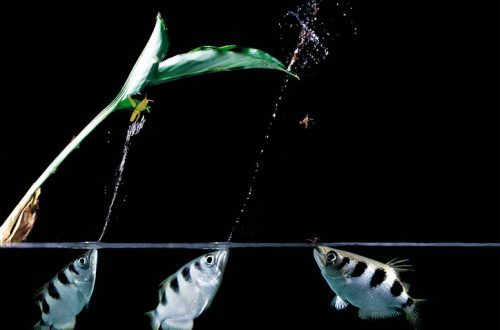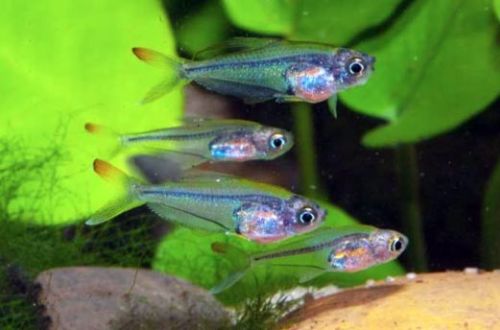
False chocolate gourami
The false chocolate gourami, scientific name Parasphaerichthys lineatus, belongs to the Osphronemidae family. A small modest fish that does not have remarkable external features and is considered not too easy to keep. In many ways, these two factors predetermined its weak distribution in amateur aquarism.

Contents
Habitat
It comes from Southeast Asia from the southern part of Burma (Myanmar). Inhabits wetlands of the Irrawaddy Delta. A typical biotope is a shallow reservoir about a meter deep with dense aquatic vegetation, the bottom is covered with a thick layer of silt. Turbid water with a large amount of organic suspension.
It is worth noting that in 2008, after the strongest cyclone Nargis, which hit just the coastal regions of Myanmar (Ayeyarwady State), large-scale changes occurred, and established biological systems collapsed.
Brief information:
- The volume of the aquarium – from 40 liters.
- Temperature – 20-30°C
- Value pH — 6.5–8.0
- Water hardness – 2–15 dGH
- Substrate type – any dark
- Lighting – subdued
- Brackish water – no
- Water movement – little or no
- The size of the fish is about 2 cm.
- Food – any food
- Temperament – peaceful
- Content – in a group of relatives and together with other species
Description
Despite its name, this species does not bear much resemblance to the Chocolate Gourami. Adults reach 2 cm in length. The body is high with a large head. The color is gray with a dark pattern. During the breeding season, the males turn orange. Fins and tail are translucent with black dots.
Food
In nature, it feeds on zooplankton (insects, larvae, small crustaceans and molluscs). In an artificial environment, it can be accustomed to alternative foods, such as dry food. However, the most preferred diet is still a diet of frozen and live foods such as brine shrimp, daphnia, bloodworms, mosquito larvae, fruit flies, etc.
Maintenance and care, arrangement of the aquarium
The optimal size of the aquarium for a small group of fish starts from 40 liters. The design uses a soft substrate, although pebbles are also suitable, many plants, including floating ones, to diffuse the incoming light, as well as various driftwood and leaf litter. The dried leaves of some trees, which are pre-soaked, give more naturalness, as they are an invariable part of the natural biotope.
Maintaining a stable aquatic environment within acceptable temperature ranges and hydrochemical values is of key importance when keeping False Chocolate Gourami. To do this, carry out regular aquarium maintenance procedures (removal of waste, replacement of part of the water, etc.) and install the necessary equipment, primarily a filtration system.
The recommended temperature range is 20–30°C. However, every year for several months the temperature should not rise above 20–22 ° C – this is an imitation of the winter period. Neglect of seasonality can lead to a decrease in the life expectancy of fish and adversely affect their reproduction.
Behavior and Compatibility
Calm fish that prefer to be in a community of relatives of at least 6 individuals. Given the modest size of this Gourami, the choice of tankmates should be treated with caution. Peaceful fish of a similar size can be considered as compatible species.
Breeding / breeding
Fish have a variable breeding strategy, changing it based on external conditions. As noted above, the beginning of the mating season is easy to determine by the color of the male, which acquires an orange color. If there is only one heterosexual pair in the aquarium, then the male will not approach the female until she is ready to spawn. In the case when a group is kept, the male still forms a temporary pair with only one female. How exactly the choice occurs is not fully understood. The fish form a clutch either in the form of a nest of bubbles on the surface or in some kind of shelter, or they spawn in a hole in the bottom, placing the eggs directly on the ground. Future parents stay near the masonry, protecting it until the fry appear, and sometimes they can even transfer the eggs to another place. Juveniles begin to peck in 3-5 days, they will stay in the nest for another 7-10 days until they begin to swim freely.
Fish diseases
The cause of most diseases is unsuitable conditions of detention. A stable habitat will be the key to successful keeping. In the event of symptoms of the disease, first of all, the quality of the water should be checked and, if deviations are found, measures should be taken to correct the situation. If symptoms persist or even worsen, medical treatment will be required. Read more about symptoms and treatments in the Aquarium Fish Diseases section.





